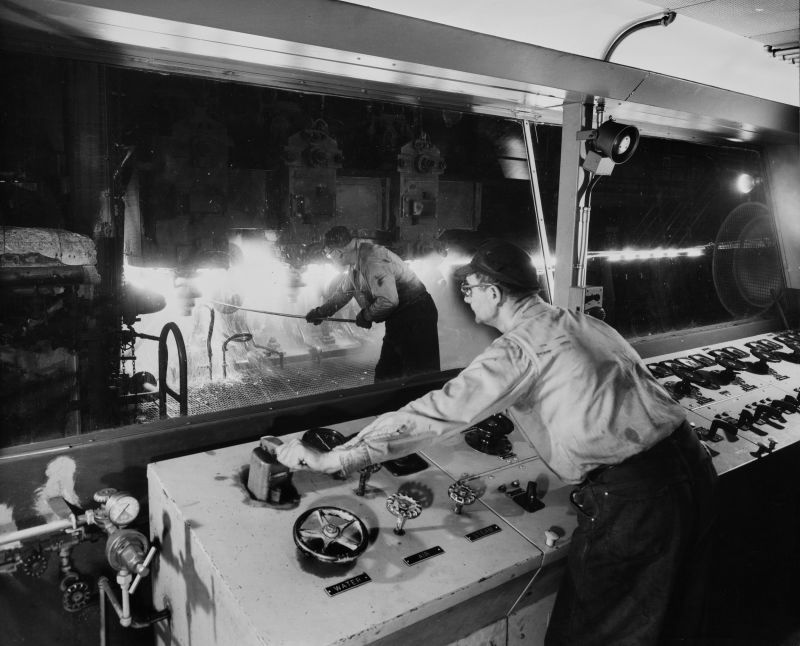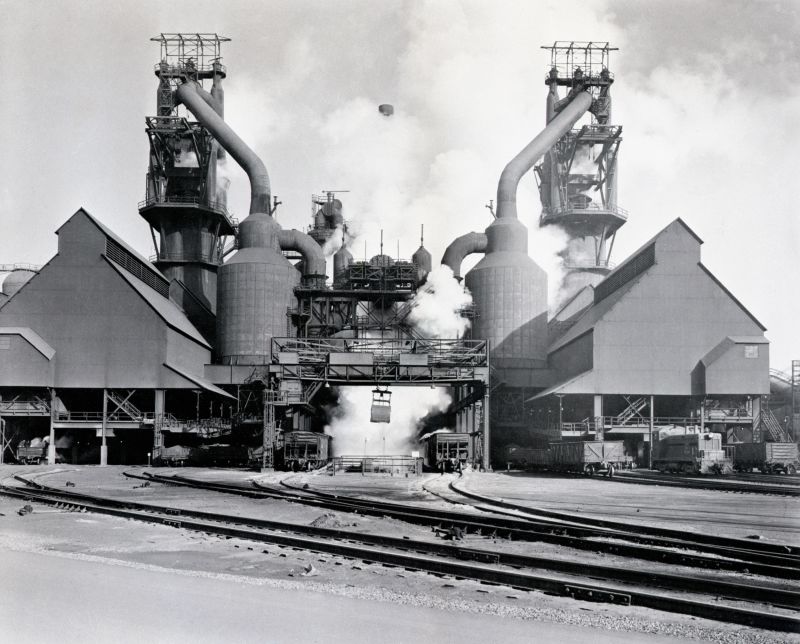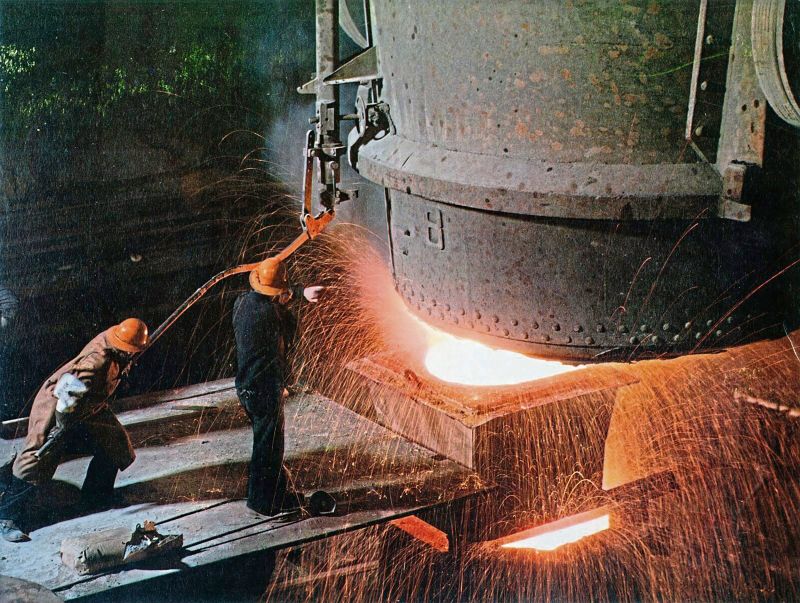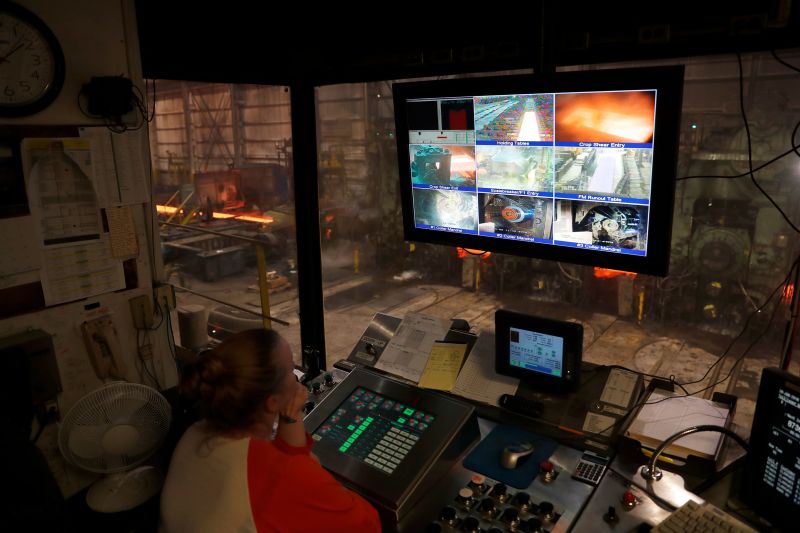
US Steel's Decline: From Economic Powerhouse to Being Acquired by Japanese Rival

US Steel, once mighty and integral to America's economy, faces uncertain future as it prepares to be acquired by a Japanese rival The iconic symbol of American industrial prowess now stands on the brink of change
The days of an independent, American-owned, US Steel, once a cornerstone of the nation's economy, may be limited. Formerly the most valuable company in the world, it has now agreed to a $14.1 billion acquisition by Nippon Steel, Japan's largest steelmaker, at $55 a share.
The sale price of $14.1 billion, a 40% premium from where US Steel's stock closed Friday before the deal was announced, is small compared to the valuation of the nation's tech giants. Apple, Google's parent Alphabet, Amazon, Microsoft, and Nvidia each trade at a valuation of over $1 trillion. Even at the sale price, US Steel is valued at less than 0.5% of the value of Apple and less than 2% of the value of Tesla.
Its revenue last year of $21 billion is equivalent to what Walmart brings in every two weeks. To put it another way, it's just over half of the annual sales that Apple receives from its wearable products, particularly its headphones.
The potential demise of US Steel as an independent, publicly-traded, American-owned company highlights the transformation of the nation's economy from manufacturing to services, such as retail, media, or technology. This shift continues to have significant economic and political ramifications today.
An operator at the control panel oversees pipe production at US Steel's Fairless Pipe Mills in Fairless Hills, Pennsylvania, in 1955.
Three Lions/Hulton Archive/Getty Images
Opposition to a foreign buyer
A historic shift in the Dow Jones Industrial Average occurred in 1991, as US Steel was ousted after 90 years, while Walt Disney and JPMorgan & Co. joined the index, signaling a transition towards an economy centered on information and finance rather than manufacturing.
Nippon Steel aims to mitigate the impact of being acquired by an overseas competitor by assuring that the US Steel name will be retained for its current operations and maintaining a headquarters in Pittsburgh. Nippon stated that US Steel shareholders will vote on the proposed deal in March, with the transaction expected to be finalized in the second or third quarter of the following year pending regulatory approval. As a result of the acquisition, US Steel's longstanding stock symbol, X, will be delisted from the New York Stock Exchange, as its assets will be assumed by Nippon.
Nippon Steel expressed a profound respect for the history and contributions of US steel, according to Takahiro Mori, Nippon's executive vice president, during a conference call with investors on Monday.
Despite this, the United Steelworkers union has announced its intention to oppose the deal and is calling on regulators to prevent the sale of US Steel to a foreign competitor.
United Steelworkers union President David McCall expressed deep disappointment in the deal between US Steel and Nippon, criticizing it as evidence of the same self-serving, myopic approach that has plagued U.S. Steel for too long. Despite remaining open to collaborating with U.S. Steel to maintain domestic ownership, the company ultimately disregarded the concerns of its loyal workforce in favor of selling to a foreign-owned entity. Political opposition swiftly emerged across party lines.
A ladle of molten iron is poured into a Basic Oxygen Process (BOP) furnace at U. S. Steel's Granite City Works, where it will be transformed into liquid steel.
U.S. Steel
US Steel, once the worlds largest corporation, agrees to sell itself to a Japanese company
US Senator J.D. Vance expressed concern over the sale of a key part of America's defense industry to foreign buyers in exchange for money. He had raised this issue earlier and will continue to oppose it in the future. The Ohio Republican had previously urged US Steel to turn down any acquisition offer from foreign companies, citing the significant role of the domestic steel industry in manufacturing military defense equipment.
Pennsylvania Senator John Fetterman, a Democrat who resides in and formerly served as mayor of Braddock, PA, where one of US Steel's original steel plants remains operational, vehemently criticized the deal and vowed to oppose the transaction.
"I am appalled by US Steel's decision to sell itself to a foreign entity," Fetterman stated. "The steel industry is crucial for our national and economic security. I am dedicated to leveraging my influence and position to thwart this foreign acquisition."
This file photo of the since closed South Chicago Works of US Steel is from when the company was near the height of its economic might in 1956.
The Pennsylvania Democrat referred to the agreement as another instance of "hard-working Americans being caught off guard by profit-driven corporations that are willing to sacrifice their communities in order to prioritize their shareholders."
Cleveland Cliffs, a rival steelmaker, made attempts to acquire US Steel in both August and October. Lourenco C. Goncalves, chairman and CEO of the Ohio-based company, expressed agreement with rust belt lawmakers in an interview with CNBC on Monday. In response to the news, Cleveland Cliffs' share price increased by nearly 10% on Monday.
Goncalves emphasized the importance of maintaining production within the United States, stating, "We cannot allow for foreign ownership or for foreign companies to come in and eliminate American jobs."
Goncalves stated that countries like China and Japan would not permit rival nations to purchase their significant steel manufacturers. He also mentioned that Nippon should have engaged the union in discussions, similar to Cleveland-Cliffs, and expressed his company's ongoing interest in acquiring US Steel. "This is far from being resolved."
The company assured investors on Monday that they are confident in their ability to obtain approval for the deal. In addition to anti-trust clearance, which would be necessary for the deal to close regardless of the buyer's origin, approval from the Treasury Department's Committee on Foreign Investment in the United States will also be required for this deal.
Quieting a giant?
However, in the face of political resistance, US Steel may be on the brink of becoming another legendary company whose time has come to an end. The potential fate of the company should serve as a warning to current global giants about how rapidly the world can transform.
The Pittsburgh-based company was created in 1901 through a merger of the top steel companies in the nation, including Carnegie Steel Corp. The merger was orchestrated by financiers J.P. Morgan and Charles Schwab, resulting in the world's first company valued at over $1 billion, which was double the entire US budget for that year. As a result of the deal, company owner Andrew Carnegie became the richest man in the world. In the early 1900s, the company played a crucial role in providing the steel that allowed the United States to become a global economic superpower. This included supplying steel for skyscrapers, bridges, and dams, as well as for automobiles, appliances, and other products in demand by American consumers.
The Homestead Works of U.S. Steel loaded the first steel beams for the 29-story United Nations Secretariat Building. Products from US Steel's mills were vital components of numerous iconic buildings, bridges, and other structures during the last century. These include the Sears Tower in Chicago, which was then the world's tallest building, the Vehicle Assembly Building at NASA's Kennedy Space Station in Florida, as well as the Tappan Zee, Verrazano Narrows, and Henry Hudson bridges in New York City, and the New Orleans Superdome.
Bettmann Archive/Getty Images
A woman knits as she looks at the steel structure of the United Nations Secretariat Building from a fire escape in New York.
Bettmann Archive/Getty Images
US Steel was once so influential that its competitive strength contributed to the enactment of the nation's antitrust laws, aiming to limit the company's and Standard Oil's strategic and financial control.
However, in recent years, US Steel has noticeably lagged behind other American steel companies in both steel production and stock market worth. The US steel industry has shrunk significantly, with no company ranking among the top 10 steel producers worldwide.
"The company reached its peak in 1916," stated Charles Bradford, a seasoned analyst in the steel industry, in an interview with CNN in August. "Since then, it's been on a decline. The highest level of output was in the 1970s, and it has shown no growth for decades."
Despite remaining profitable, US Steel (X) may not have much time left as an independent company if the deal is approved by regulators. Should it be blocked, it is highly probable that it will be acquired by another steelmaking competitor, as it has been the focus of a bidding war since August.
Engine of the US industrial economy
During the 19th and 20th centuries, Pittsburgh and other Rust Belt cities attracted a large number of workers in search of high-paying factory jobs. The blast furnaces were constantly generating profits, producing steel coils and thick smog.
In 2001, the Pittsburgh Post-Gazette reported that US Steel reached its peak employment of 340,000 in 1943 during World War II, playing a crucial role in the war efforts of the allied forces.
{{img_placeholder_5}}
The U.S. Steel Homestead Works around 1970 saw slow responses from US Steel and other integrated steelmakers as new rivals entered the market with advanced technologies in the 1970s and 1980s.
In 1953, the company reached its peak steel output of 35.8 million tons, while European and Japanese steelmakers were still trying to recover from the war. By contrast, last year US Steel only shipped 11.2 million tons of steel from its US operations and employed just under 15,000 people.
Competing with outdated technology
The company struggled to keep up with new competitors, both from overseas and within the country. It was outpaced by companies in Japan and Germany, which had to start over after World War II and adopted more efficient technologies that reduced the need for labor and energy.
Bradford stated that US Steel had outdated 1940s technology. Despite eventually upgrading factories and equipment to match their foreign competitors, they continued to rely heavily on older methods for producing steel, including using giant blast furnaces to melt raw materials like iron ore.
The so-called "mini-mills," which are non-union competitors using electric arc furnaces to recycle old steel scrap, quickly outperformed the "integrated" steelmakers. One of the pioneers in this mini-mill technology, Charlotte-based Nucor, boasts a market capitalization of $43 billion, far exceeding US Steel, which has a value of just over $14 billion. Nucor is also America's largest steelmaker by output, producing an estimated 20.6 million metric tons of steel per year, ranking as the 16th largest in the world. This is in comparison to US Steel's total of 14.49 million metric tons, including its operations in Europe, ranking 27th globally for 2022 according to the World Steel Association.
US Steel did not open its first electric arc furnace until 2020. Bradford emphasized that US Steel and other major US integrated steelmaking competitors, such as Bethlehem Steel, Inland Steel, and LTV Steel, consistently underestimated the competitive challenge posed by overseas and domestic mini-mills.
{{img_placeholder_6}}
In 2018, Steelworker Amanda Menendez monitored the different stages of the production process within the hot-strip mill at the US Steel Granite City Works facility in Granite City, Illinois.
Jeff Roberson/AP
In more recent years, steelmakers from China, India and Korea have expanded capacity far beyond US Steel.
The decrease in American manufacturing jobs has become a focal point in the 2024 presidential election, as President Joe Biden pushes for a resurgence of these jobs. However, the type of jobs Biden aims to revive are significantly different from those of the past century, including his focus on increasing the manufacturing of chips for AI and other high-tech uses, as well as electric vehicles and batteries.
Bethlehem, Inland, and LTV have all filed for bankruptcy in the past three decades, leading to the closure or sale of their assets to other companies. The remnants of these companies now belong to Cleveland-Cliffs, a steelmaker that has surpassed US Steel in both capacity and output. In August, Cleveland-Cliffs made a bid for US Steel, but their offer was 40% lower than what Nippon Steel is currently offering. There is now a greater possibility than ever that this iconic company of US corporate and economic history may soon cease to exist as an independent, American-owned institution.
CNNs Matt Egan and Paul Glader contributed reporting to this story.
















